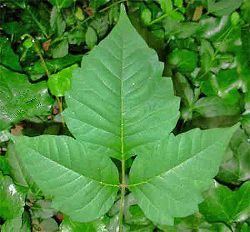Earth First! News

Poison ivy’s potency has doubled since the 1960s and scientists expect it to double again in the coming century as CO2 levels and temperatures rise. We are talking an all new itch-yer-ass-clean-off kind of poison ivy.
“The chemistry of the oil itself changes in such a way that it more likely will produce a rash when you come in contact with it,” said Lewis Ziska, a research weed ecologist with the Department of Agriculture. “In the last 50 years, the growth rate of [the] poison ivy plant already has doubled, increasing the risk of being exposed to urushiol.”
Poison ivy greatly benefits from higher atmospheric CO2, said Jacqueline Mohan, an assistant professor of biology at the University of Georgia. In 2006, Mohan partnered with Ziska and Duke University researchers in a project that exposed poison ivy to CO2 levels that could exist within 100 years. Apparently, the rashy litte weed loved it.
So what can you do? Stay out of the woods? Hell no. The better solution would be to topple a couple of industrial CO2 emitting facilities in your neck of the woods. You can also work to increase the population of deer, bear and other critters in your area. These animals eat poison ivy for breakfast. Of course, you could wear protective clothing, gather up a bunch of the plant and bake it into a casserole to take to the next pro-coal or oil and gas industry meeting in your area.
Poison ivy the rich!

